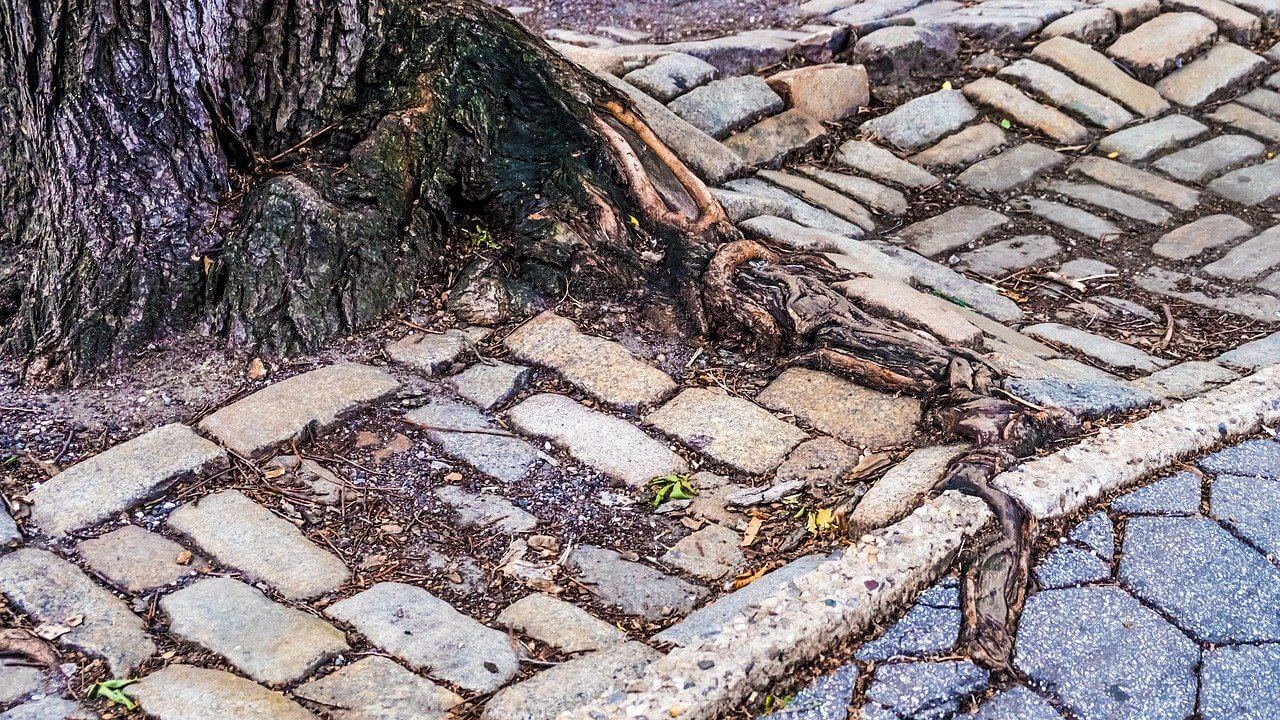Tree roots are well known for blocking and breaking sewer pipes on residential property. They are biologically designed to seek out water and nutrients, which is exactly what’s inside your sewer pipes. As experience pipe relining specialists in Sydney, we see tree roots tangled up in drain and sewer pipes almost every day.
If you’ve experienced this problem in your garden, the best way to repair a tree-root blocked drain without digging up the ground is through pipe relining. BUT, even better than repairing your pipes is avoiding the trees with the most notoriously invasive tree roots to save yourself the pain in the first place.
Use the following links to find out more about these invasive tree roots:
- The top 3 tree roots to avoid in your garden
- 15 other invasive trees to avoid planting in your garden
- The five best trees to plant in your garden
- How to handle an existing invasive tree on your property
If you’re planting a new garden, looking for landscaping tips or planning what to do with your new block of land, keep reading to discover the top 3 trees to avoid for the sake of your underground plumbing.
The top 3 trees to avoid planting in your garden
The list of trees to avoid planting is quite extensive, but here are our top 3 to keep an eye out for.
1. Camphor Laurel (Cinnamomum Camphora)
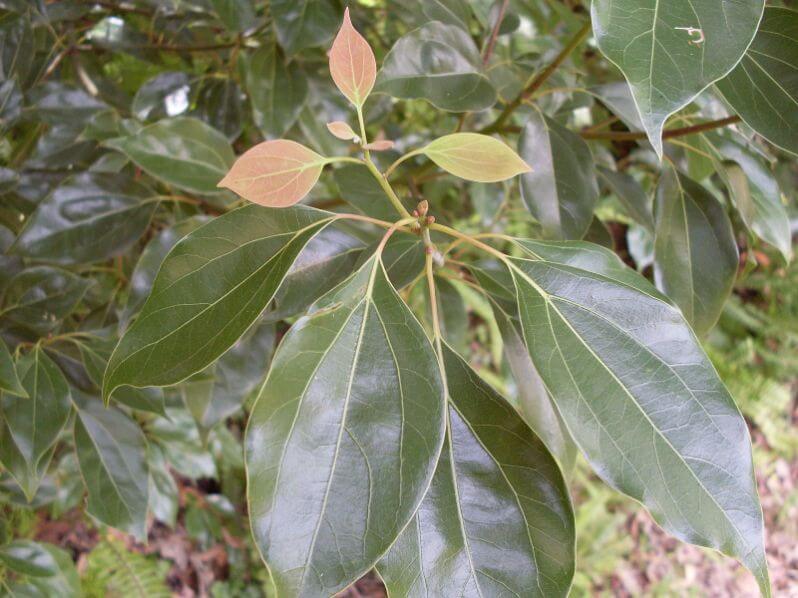
Looks can be deceiving, as this tree has spreading, luscious, shade-giving leaves and, at first glance, looks incredibly beautiful. However, these trees quickly grow to 15-30 metres tall and have some of the most invasive and damaging root systems in Australia. They are, in fact, a declared weed in Southeast Queensland because they grow so quickly, can self-germinate, and their roots are so damaging. Once they spread, they are difficult to stop!
2. Fig Trees (Ficus)
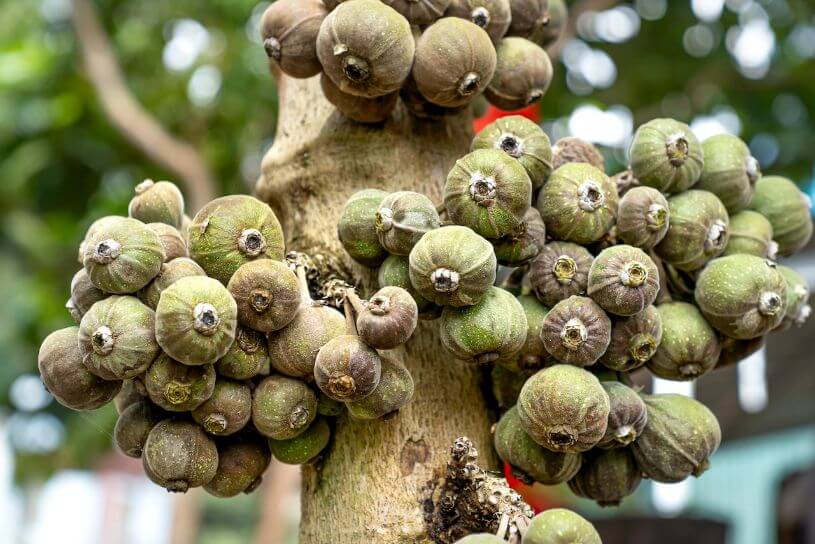
This is another common variety of garden tree that you don’t want anywhere near your property. Fig tree roots are extremely invasive. Although they are pretty, they damage not only sewer pipes and drains but also paths, walls, and building foundations.
Instead of planting them in your garden, plant them in a garden pot. Even then, beware! Their roots are nutrient hunters and are so strong that if ignored and not attended to, they can grow through the pot’s drainage holes, cracks or even over the top to find soil, water, and fertiliser.
The worst offenders within this Ficus family are Weeping Figs, Moreton Bay Figs, and Port Jackson Figs.
3. Willow Trees (Salix)
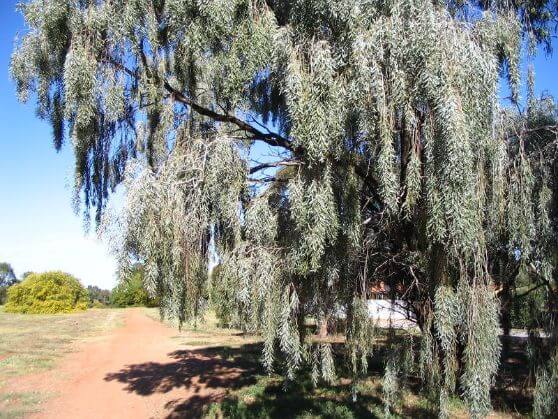
It would be impossible to make a list of the top trees to avoid planting without including willow trees. Their aggressive roots are capable of destroying underground pipes and even roads. Willows are considered a weed by almost every state in Australia. Most homeowners are not able to plant them.
They are, however, incredibly common, especially around water sources like ponds, dams and wetland areas. This speaks to their love of nutrient-rich water and, if found in your garden, shows how quickly the roots will spread to your pipes if they get even a whiff of what’s inside!
If you are planning a new house on a block with willow trees, it may be wise to talk to a landscaper about the options of removing them and using an alternate tree variety. Even if the tree is a little far off from your house or pipes; their roots can grow up to forty metres and still cause damage.
15 invasive tree roots to avoid adding to your property
1. Illawarra Flame Tree Roots
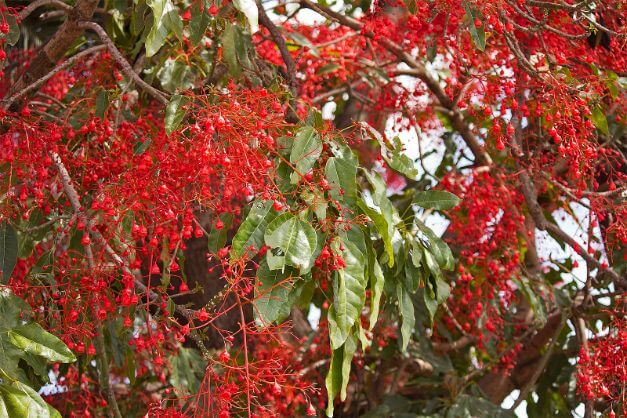
Level of invasiveness: High
Tree Characteristics: The Illawarra flame tree is commonplace in Australia. They’re known for their bright red flowers that bloom after Jacaranda season. It is a large deciduous tree whose roots can quickly unearth and destroy paths, building foundations and pipes. Although it is beautiful and a common sight in many parts of the country, NSW councils have restricted its planting due to its destructive root system.
Average Root Span: 5-8 metres
Best place to plant: If allowed in your region, ensure your Illawarra flame tree is a minimum of 10 metres away from any buildings or major plumbing work.
2. Casuarina Tree Roots
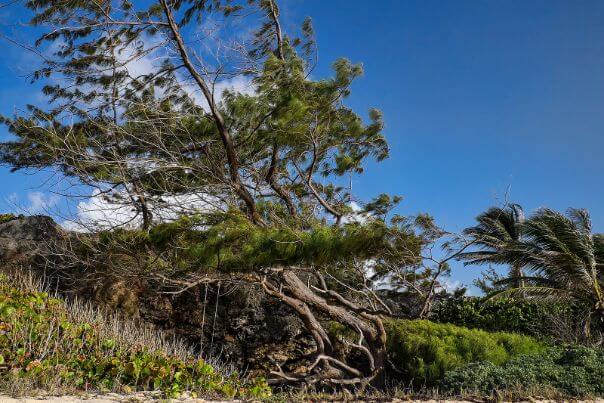
Level of invasiveness: High
Tree Characteristics: The Casuarina tree derives its name from the cassowary bird as its textured foliage resembles the feathers of the bird. It doesn’t have leaves, but its green foliage comes from fine branches or ‘branchlets’ that can create a thick cover. Native to Australia, they come in various species and sizes, from shrub bushes to large trees.
Average Root Span: Up to 30 metres
Best place to plant: Casuarina tree roots are adventurous, penetrative, and aggressive. It is best to keep them away from pipes, as they are high on the list of worst offenders for blocked pipes and drains.
3. Jacaranda Tree Roots
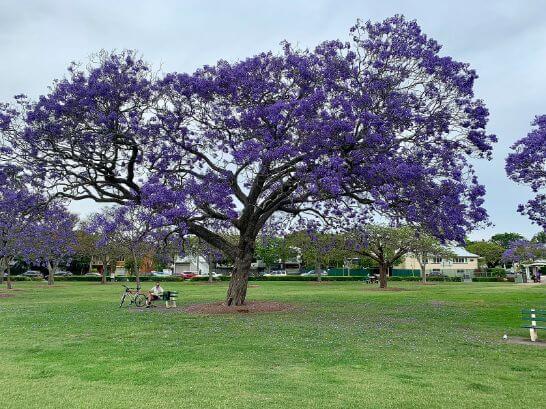
Level of invasiveness: High
Tree Characteristics: Jacaranda trees create a beautiful purple canopy when flowering. Their roots are prolific and can be seen above topsoil. Their roots can be a safety hazard for general yard use as it’s easy to trip on them, but they’re even more hazardous to structures nearby.
Average Root Span: 9-18 metres
Best place to plant: Jacaranda trees are not ideal for small gardens, anywhere with lots of foot traffic or close to any plumbing or foundational structure. Be careful of planting restrictions in your local area. Jacarandas are an environmental weed in New South Wales and Queensland.
4. Sweet Gum (Liquidambar) Trees
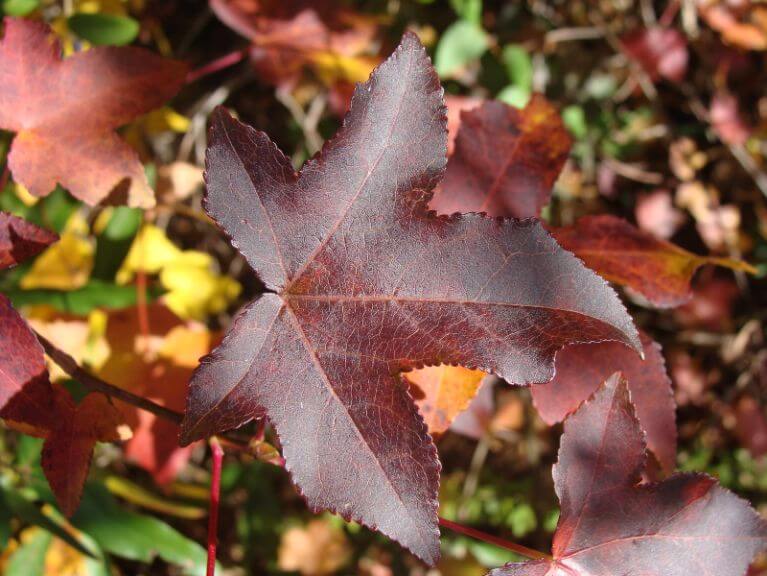
Level of invasiveness: High
Tree Characteristics: Liquidambar trees are highly ornamental, beautiful trees. Recognised for their red, 5-star pointed leaves, they are a popular choice for gardens, properties and boundary lines. Although famous for their appearance, their roots are highly aggressive. In one instance, a plumber found over 30 metres of roots growing inside and blocking a terracotta pipe beneath the ground.
Average Root Span: 50 metres
Best place to plant: Although beautiful, plant these trees far away from houses, buildings, pools and any other ground structures.
5. Eucalyptus Roots
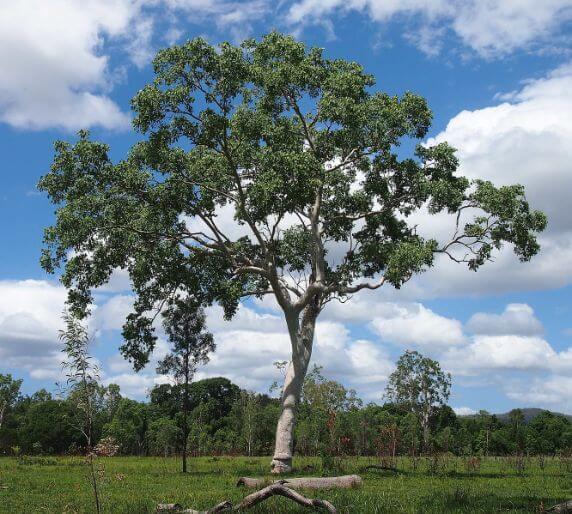
Level of invasiveness: High
Tree Characteristics: Eucalyptus trees, also known as gum trees, are native to Australia and include over 800 different species. They are identifiable by their gooey sap that oozes from the wood when cut.
Average Root Span: 20-30 metres
Best place to plant: Keep Eucalyptus far away from any structures, pools or retaining walls. Their roots can grow up to 30 metres and have evolved to seek water to survive our country’s dry weather conditions. Keeping a distance between buildings and trees is also wise due to the large branches that can often fall from the trees.
6. Evergreen Alder Tree Roots
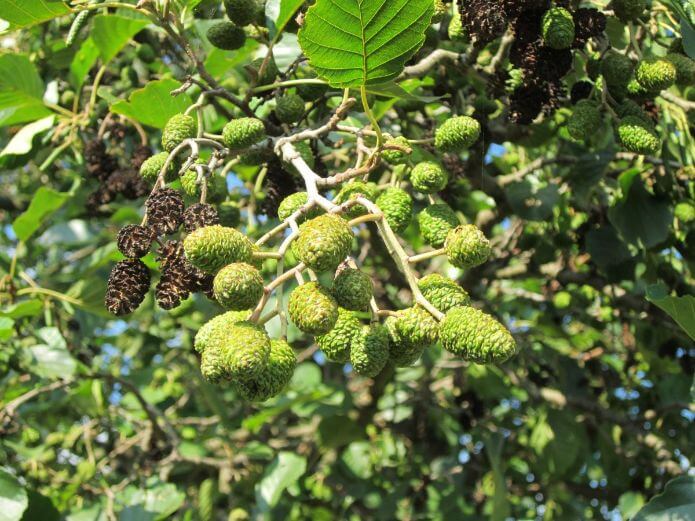
Level of invasiveness: High
Tree Characteristics: A popular and commonly found tree in Melbourne, the Evergreen Alder is an enormously large tree with cascading leavings, often planted for its beautiful foliage. Its popularity also rose from its fast-growing nature for fast landscaping options in new development areas, with the tree growing 6-9 feet per year.
Average Root Span: Up to 90 metres
Best place to plant: Due to its size and invasive roots, the Evergreen Alder is not appropriate for small gardens. If used in a small space, its large canopy will quickly take over your garden, and the roots will make their home in all the available soil in reach.
Evergreen Alder’s roots can unearth fences, walls and vegetable gardens. Their roots seek out water so they could damage your underground pool pipes.
7. Pine Tree Roots
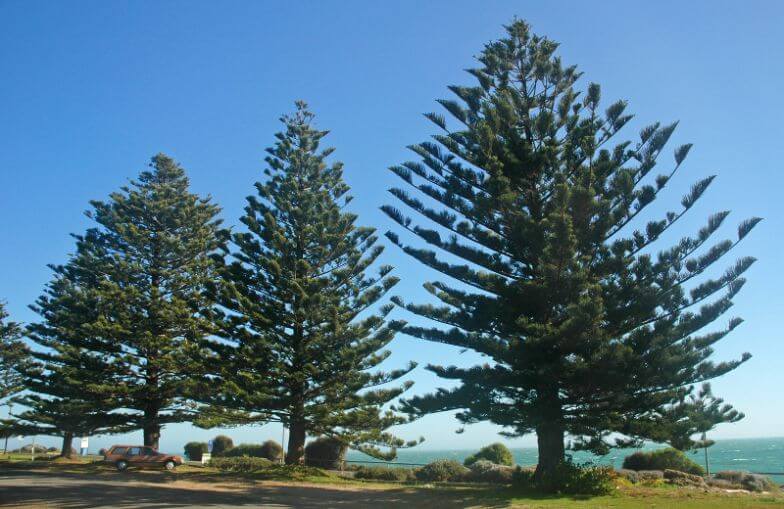
Level of invasiveness: Medium
Tree Characteristics: Pine trees grow in various sizes and have an iconic Christmas tree shape. There are over 250 species of Pine trees that are often tall and woody with needle-like leaves. Pine trees have an impressive but highly aggressive root system. Because the tree can grow up to be quite tall, they rely heavily on their root system to hold them up in the wind. The pine’s tap root system helps them hold their structure and can even connect with other trees.
Average Root Span: 10 metres
Best place to plant: Tap roots generally grow downwards, so while they are aggressive and make the list of invasive plants, they are less worrisome than other trees of their size, like the Eucalyptus tree.
8. Poplar Trees
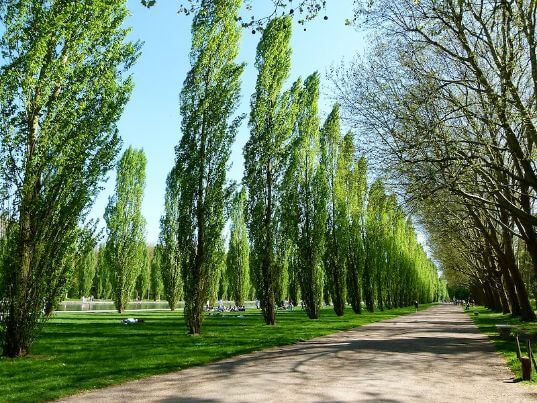
Level of invasiveness: Medium
Tree Characteristics: Poplar trees are native to North America and are known as Cottonwood, Aspen and Balsam Poplar trees. They are extremely tall when mature and fast-growing. The tree is used for lumbar and milling. Plywood, cardboard, and paper are all products of this tree.
Average Root Span: 50-90 metres
Best place to plant: The root system of Poplar trees tends to follow the path of least resistance. This lessens the damage done compared to some highly invasive tree root systems. Due to the high moisture requirements of the trees, they grow quickly. This will block drains and pipes given the right conditions. For this reason, plant Poplar trees away from pools, drains, and houses.
9. Rubber Tree Roots
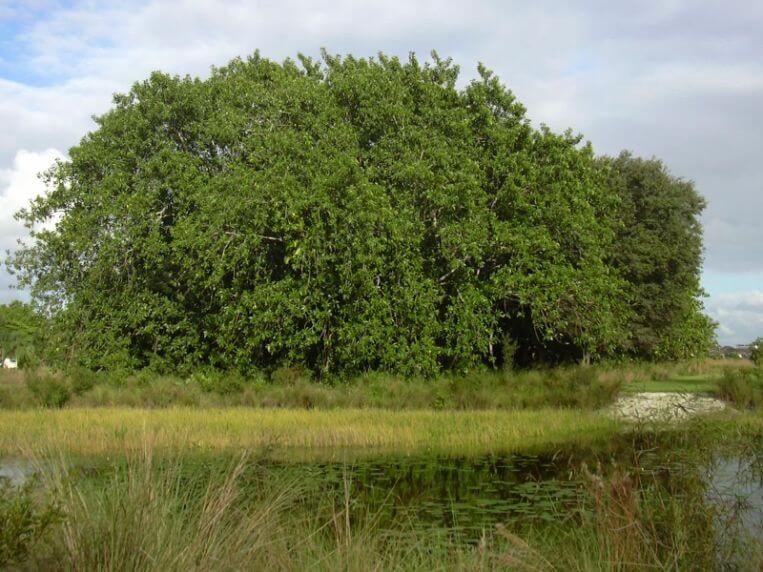
Level of invasiveness: Medium
Tree Characteristics: Rubber Tree Plants are South American tropical trees. They can grow anywhere from 20-40 metres tall and have smooth, grey trunks with very few branches down low. Rubber trees are grown commercially for their latex sap. Their tropical heritage predisposes them to need a continuously moist environment. Because of this, their roots can damaged and block pipes while searching for water.
Average Root Span: 3-5 metres
Best place to plant: Due to their invasive roots, Rubber trees are best planted away from pipes or buildings. However, they can be planted and grown in pots if you desire to have one close to your home.
10. Coral Trees
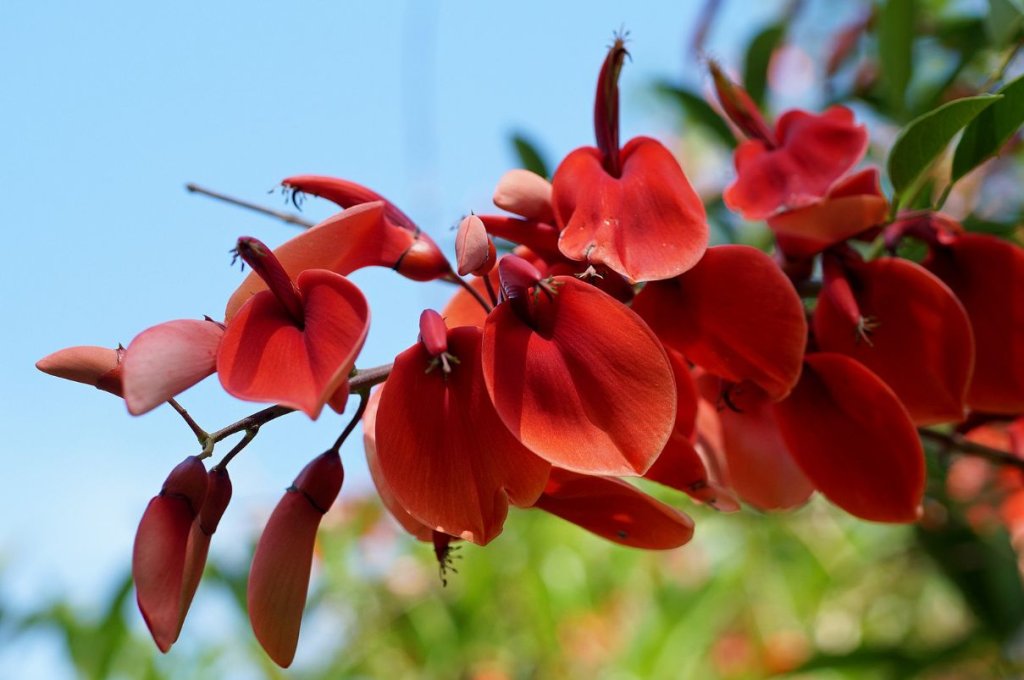
Level of invasiveness: Medium
Tree Characteristics: Coral trees are tropical spreading trees known for their red clusters of flowers in the spring. It is native to South America and often grows as an ornamental garden plant. However, it grows rapidly along waterways and is considered an environmental weed in many coastal New South Wales and Queensland regions. The Coral tree roots grow in shallow depths within the top 30 centimetres of the ground, but they are highly aggressive water-seeking roots.
Average Root Span: 6-12 metres
Best place to plant: One of the most water-hungry plants, its root fragments are known to continue to suck water even after being cut from the plant. For this reason, they need to be planted well away from pipes, swimming pools and walls.
11. Chinese Elm Roots
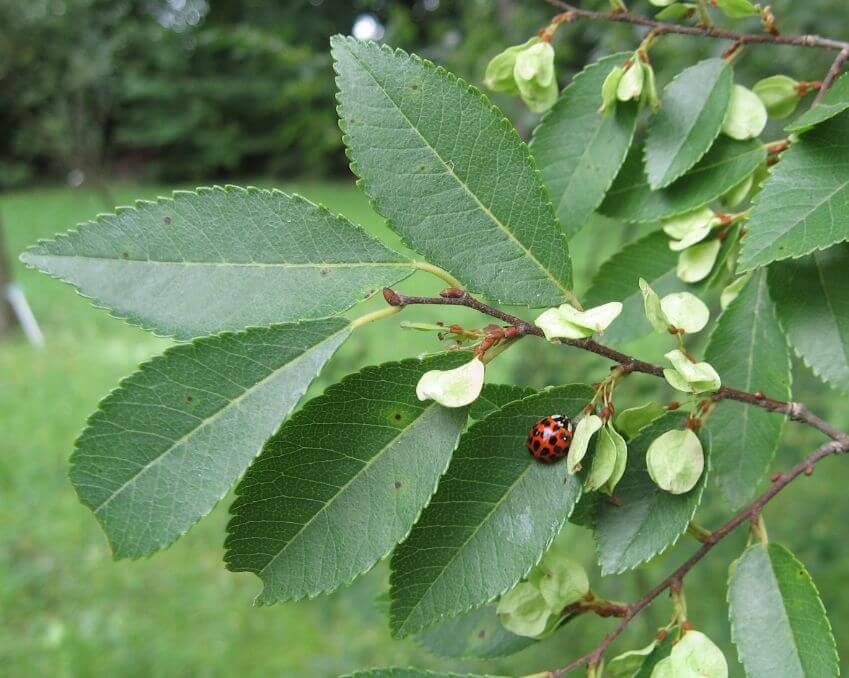
Level of invasiveness: Medium
Tree Characteristics: Chinese Elm trees are rapidly growing within Australia and taking over the natural scenery. The umbrella-shaped trees are considered invasive and are a declared weed in some parts of New South Wales and Queensland due to their rate of growth and ability to self-germinate. In addition, their roots are vast, moisture-loving systems renowned for unearthing footpaths and blocking pipes and drains.
Average Root Span: 30-60 meters
Best place to plant: The invasive roots beneath a Chinese Elm Tree are commonly found in blocked sewer pipes and will uplift most concrete surfaces built too close. If you are allowed to plant these in your area, they are best suited to open spaces away from buildings, pipes and structures.
12. Silky Oak Tree Roots
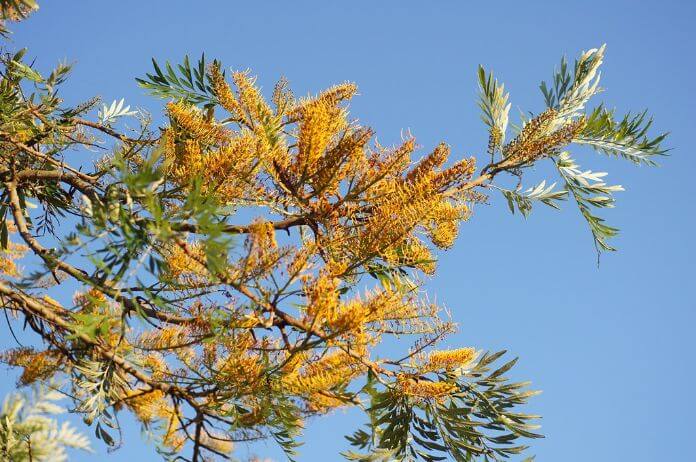
Level of invasiveness: Medium
Tree Characteristics: The Silky Oak is native to the Eastern coast of Australia. It has dark grey bark, fern-like leaves, and orange flowers and can grow anywhere from 5-40 metres tall. It is drought tolerant as a native Australian tree, but this comes due to its roots’ innate ability to seek out water.
Average Root Span: 30-60 metres
Best place to plant: With roots on the hunt for water, it is not recommended to plant this tree anywhere near pools, sewer pipes or buildings. The roots can also grow in shallow ground, making ground surfaces uneven and lifting paths and concrete, so ensure there is plenty of distance between your tree and any landscaping or road works on your property.
13. Pride of Bolivia Tree
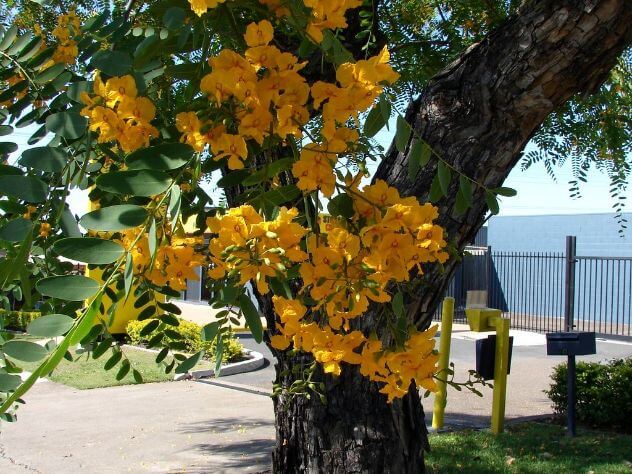
Level of invasiveness: Medium
Tree Characteristics: Also known as Tipuana, the Pride of Bolivia tree is a slender tree with a spreading and slightly flattened crown and bright yellow flowers in spring. It is a hardy plant and grows all over Australia, but due to its fast-growing, invasive nature, it is considered an environmental weed in Queensland and parts of New South Wales.
Average Root Span: Up to 30 metres
Best place to plant: The Pride of Bolivia roots give this tree its hardy, weatherable nature, as they grow quickly and aggressively to find water wherever possible. It will be attracted to the finest cracks in sewer pipes or even a leaky garden tap, so do not plant these trees anywhere near buildings or plumbing lines.
14. Silver Maple Roots
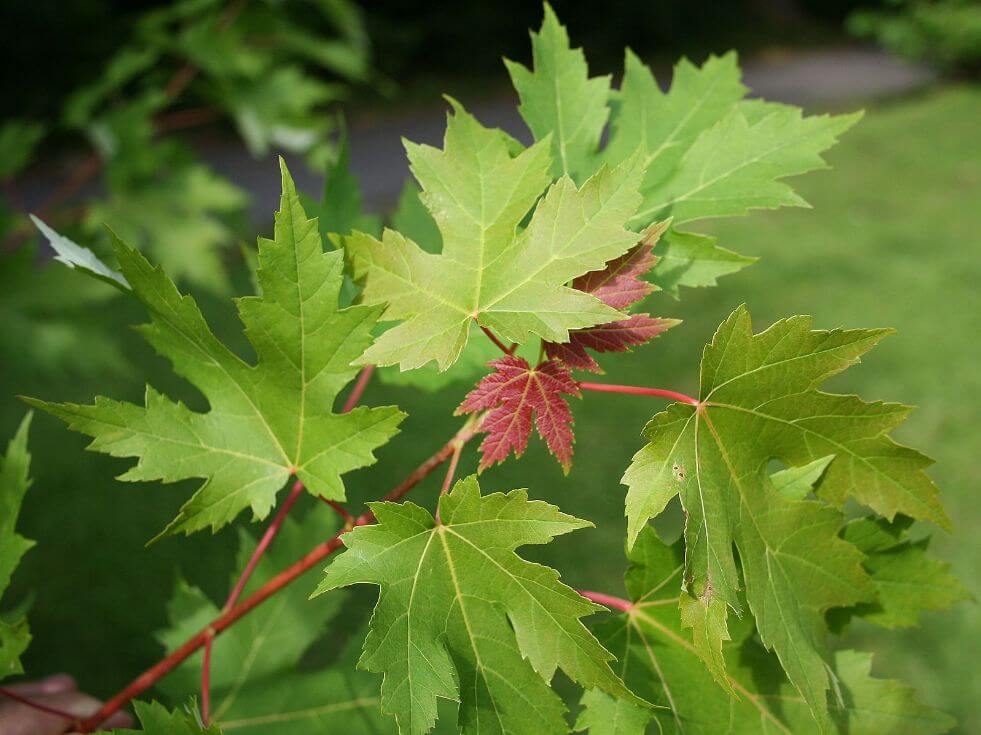
Level of invasiveness: Medium
Tree Characteristics: The Silver Maple is native to the United States and Canada and has a distinct silver lining on the underside of its palmately lobed leaves. At maturity, it is a large, beautiful shade tree that can grow up to 25 metres high and has a canopy up to 15 metres wide. It is well known for its strong and invasive root system, with most other plants and grasses having difficulty growing at its base.
Average Root Span: 10-15 metres
Best place to plant: Although its roots are renowned for being invasive, they are also shallow growing and rarely grow deep enough to reach sewer pipes unless planted directly on top of them. They are, however, not suited to be built close to homes, buildings or even swimming pools due to the root’s tendency to unearth the surface of the ground and lift concrete and foundations.
15. Golden Robinia Trees
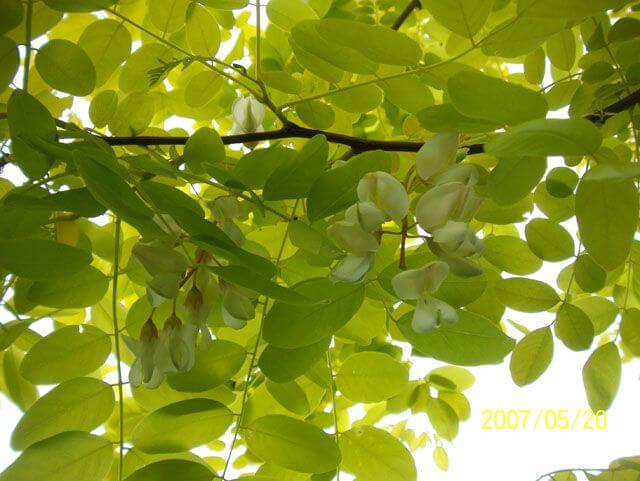
Level of invasiveness: Medium
Tree Characteristics: Golden Robinia is a fast-growing, deciduous tree with beautiful, decorative leaves. These lime green leaves become a vibrant and intense golden colour in Autumn. They are a good shade tree and are often planted around power lines and on streets due to their shorter height and pollution tolerance.
Average Root Span: 10-17 metres
Best place to plant: These roots don’t grow to a concerning depth for pipes and sewer lines, but they grow viciously and rapidly and should be kept away from house foundations and any groundwork. Their roots only need a slight disturbance to encourage them to send up suckers, which can be found up to 17 metres away from the original tree.
The 5 best trees to plant in your garden
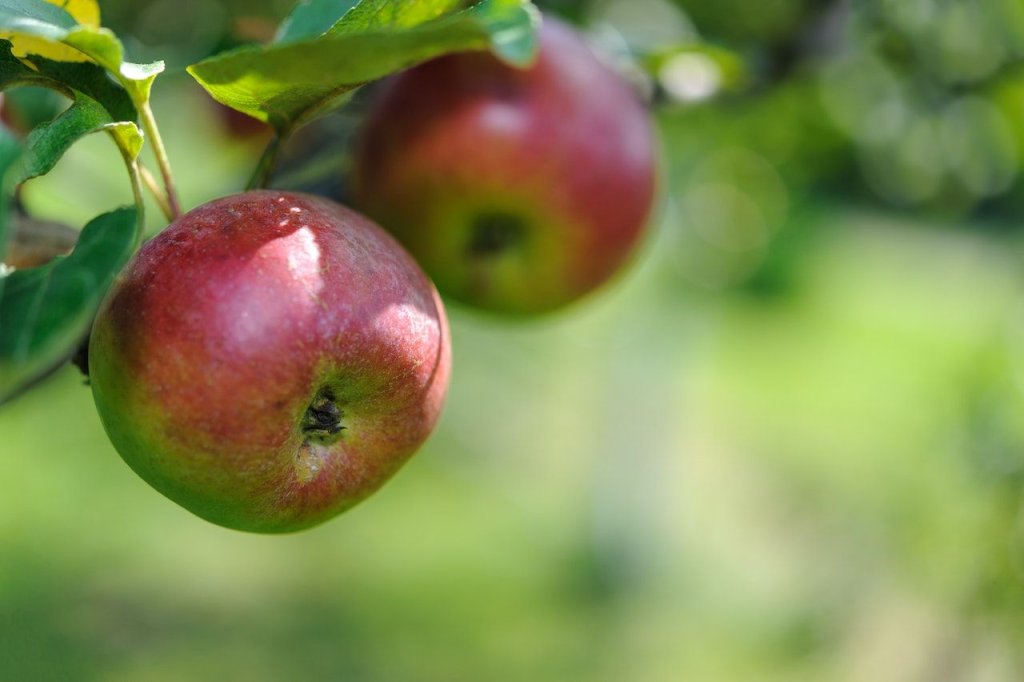
Reading through this list of trees to avoid invasive roots, it may sound like you need to give up on having trees in your garden altogether. Thankfully, there are a wide variety of trees and plants that have root systems that are not aggressive and are safe to plant near pipes, drains, homes, and swimming pools.
The best non-invasive trees for your property
- Apple Trees
- Feijoa Trees
- Coastal Golden Wattle
- Olive Trees
- Bay Trees
Want to figure out which one of these trees is best to plant near your property’s drains? Read more about the five trees that won’t block your drains.
How to handle invasive tree roots on your property
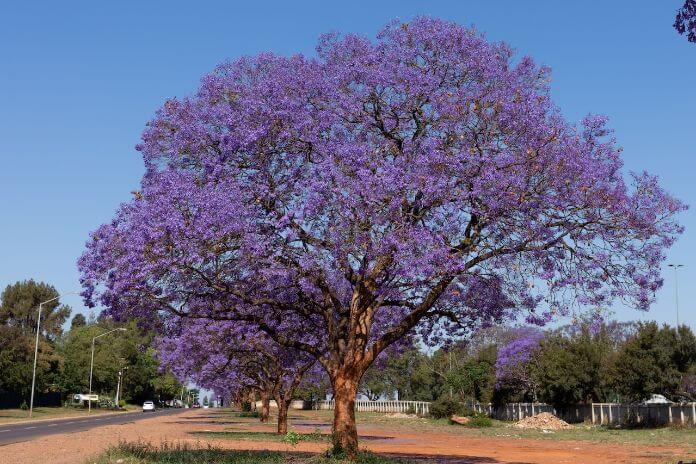
If you have found yourself here with a pre-existing tree root plumbing issue, pipe relining could be your saving grace. Rather than having to dig up your garden and trenching through the mud to find your damaged pipes, pipe relining allows you to fix your blocked pipes without touching your garden or lawn. This is especially ideal if you have issues with pipes near swimming pools or phone lines, avoiding the heightened risk of damage to them.
How does it work? We use CCTV to find the blockage in your pipes and remove the offending tree roots. We then use an epoxy liner to cover any cracks or holes in the pipe, creating a new pipe in your old pipe. By removing any cracks or crevices in your pipes with an impenetrable epoxy seal, the tree roots should not be able to get back in, and your pipes will have a long, functional life.
With over 20 years of experience repairing blocked drains with our easy no-dig pipe relining solution, we are the number to call if you are experiencing blocked pipes and drains. Contact us today to find out how pipe relining can save your garden.
Back to Top